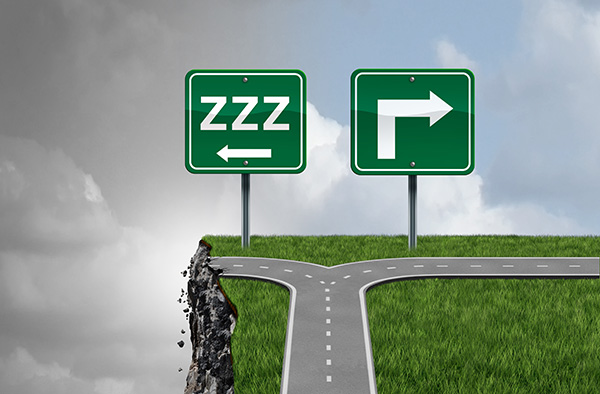
Drowsy driving is an often overlooked but serious risk on the road. Many of us think of texting, speeding, or driving under the influence when it comes to dangerous behaviors behind the wheel, but driving while tired can be just as serious. While the effects of drowsy driving may not be as widely discussed, they are very real—and they can happen to anyone. Falling asleep at the wheel is not only a threat to your safety but also to the lives of others around you. So why is drowsy driving such a significant hazard, and how can we take steps to prevent it?
Why Drowsy Driving Is So Dangerous
When you’re tired, your reaction times slow down. Your ability to make quick decisions, assess situations, and remain alert diminishes with every mile you drive. This is where the danger lies. Even a split second of delayed reaction can be the difference between avoiding an accident and causing one.
Driving requires full attention, and when fatigue sets in, that focus can slip. Your eyelids feel heavy, your mind begins to wander, and before you know it, you're struggling to stay awake. In extreme cases, people experience microsleeps—brief, uncontrollable moments of sleep that last only a few seconds but can be deadly on the road. If you’re traveling at highway speeds, falling asleep for just three to four seconds means you could cover the length of a football field with no awareness of your surroundings. That’s a terrifying thought.
The Similarities Between Drowsy Driving and Drunk Driving
One of the scariest aspects of drowsy driving is how similar its effects are to drunk driving. Research has shown that being awake for 18 hours straight can impair your driving ability as much as having a blood alcohol concentration (BAC) of 0.05%, and after 24 hours, that impairment is equivalent to a BAC of 0.10%—well above the legal limit for drunk driving.
Both drunk and drowsy driving affect cognitive functions, reaction times, and concentration. Coordination suffers, decision-making slows, and judgment becomes impaired. The bottom line is that when you drive tired, you cannot safely operate a vehicle. Yet many drivers don’t realize how dangerous this can be and will push through exhaustion, thinking they can make it to their destination without any issues.
Recognizing the Warning Signs of Drowsiness
Most of us have driven tired at some point, but it’s important to recognize when fatigue is becoming a real hazard. There are several telltale signs that you may be too tired to drive safely:
- Frequent yawning or blinking
- Difficulty focusing or keeping your eyes open
- Drifting from your lane or hitting the rumble strip
- Missing road signs or exits
- Feeling irritable or restless
- Nodding off briefly and snapping awake
If you notice any of these symptoms while driving, it’s time to pull over and take a break. Continuing to drive in this state is not worth the risk. It’s better to rest for a while, even if it delays your trip.
How to Prevent Drowsy Driving
The best way to avoid the dangers of drowsy driving is to plan ahead and make sure you’re well-rested before hitting the road. Here are some practical tips to help prevent drowsy driving:
- Get a full night’s sleep before long trips. Aim for at least 7-9 hours of sleep the night before, so you’re refreshed and alert.
- Take regular breaks. If you're going on a long drive, stop every two hours or 100 miles to stretch your legs and recharge.
- Share driving duties. If possible, travel with someone who can take turns driving, especially on extended trips.
- Avoid driving at night. Your body’s natural circadian rhythm makes you feel sleepier during the late-night hours, making nighttime driving more dangerous.
- Stay hydrated and avoid heavy meals. Dehydration and eating heavy meals can make you feel lethargic and increase the chances of feeling sleepy behind the wheel.
- Use caffeine wisely. While a cup of coffee or an energy drink can provide a temporary boost, it’s not a long-term solution to fatigue. If you find yourself relying on caffeine just to stay awake, it’s time to take a break and rest.
By taking these precautions, you can significantly reduce your risk of drowsy driving and ensure that you reach your destination safely.
The Impact of Drowsy Driving on Public Safety
Beyond the personal risk, drowsy driving has a huge impact on public safety. According to the National Highway Traffic Safety Administration (NHTSA), drowsy driving is responsible for thousands of crashes, injuries, and fatalities each year in the United States alone. These accidents are preventable, and the costs—both human and financial—are staggering.
What makes drowsy driving particularly dangerous is its unpredictability. Unlike driving under the influence of alcohol, where drivers may still have some level of awareness, falling asleep at the wheel means you have absolutely no control over your vehicle. There’s no braking, swerving, or attempts to avoid a crash. This makes drowsy driving accidents some of the most severe and devastating.
By recognizing the dangers and taking proactive steps to stay alert, we can all contribute to safer roads.
Don’t let a moment of fatigue lead to a lifetime of regret. If you’ve experienced an accident, db Orlando Collision is here to provide top-quality collision repair. Schedule your appointment now, and drive with confidence knowing your vehicle is in expert hands.